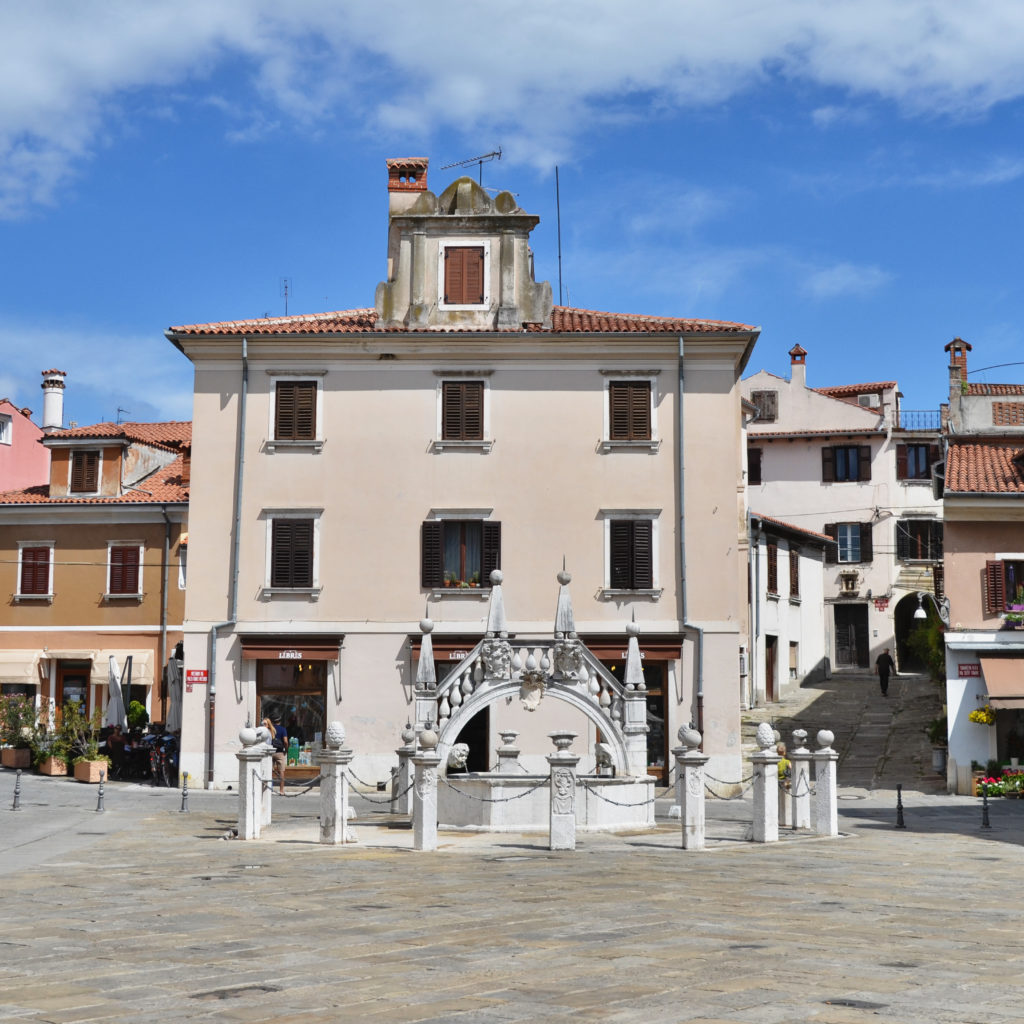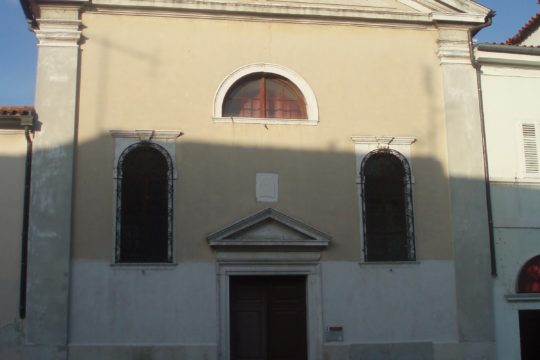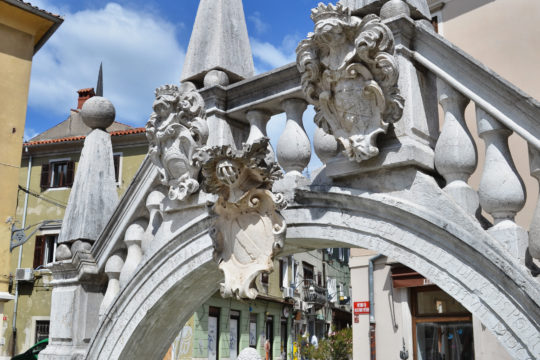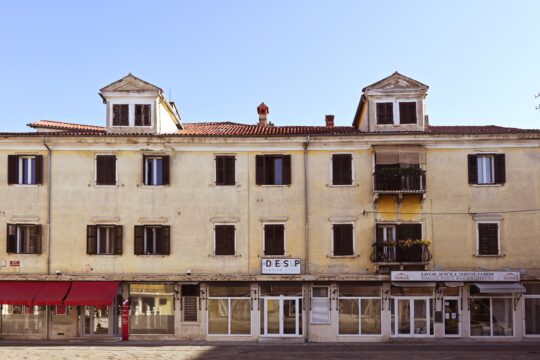We enter Prešeren Square, previously the most important peripheral square in Koper, through the Muda Gate, the ancient gate of the town which, for centuries, served as the only land entrance into the town, and which is nowadays preserved in all the glory of its Renaissance spirit.
On the left side of the gate, you can admire the remnants of the ancient fortification wall with several smaller arched gates. On the right side, you will see St Bassus church from the end of the 16th century which sprang up in the place of the ancient hospice – the shelter for the poor and foreigners of the town. The crown jewel of the square is the Da Ponte fountain.
Decorated in the Baroque style and erected in 1666, it stands at the end of the northern side of the square.
The square evolved next to the most important town gates of the former island.
They were connected to the mainland with a bridge, thus representing an important traffic connection. This is why in the past, actual commerce was flourishing in the square, especially the sale of bread that the rural women baked to sell in the town.
Previously, the square was also called the Da Ponte Square, probably in honour of the former podesta Lorenzo Da Ponte, after whom the fountain in the square is also named. Perhaps, however, the square got its previous name because the inhabitants of Koper used to call the town district next to the square “del ponte“, and the square itself “in ponte“, mainly due to the aforementioned bridge (in Italian, ponte means bridge).
After World War II, the expression “pri Mudi” (“next to the Muda”) was also used in connection with the town gates.
Today, the square bears its name in honour of the Slovenian poet France Prešeren, author of the poem Zdravljica, a part of which also became the text of the Slovenian national anthem.
In the square, you can also admire the Cadamuro-Morgante Palace from the 18th century.
If you pay attention to the ground you’re walking on through the square, you will also see a bronze casting of the image of Koper from back when it used to be an island, based on the plan of Koper created by Giacomo Fino in 1619.






